Angelica stems, cut and mixed with cream and a spoonful of yogurt and allowed to ferment, inspired by a traditional Sami recipe for preserving herbs in reindeer milk might sound odd, but it's a good way to capture the aroma of the plant.
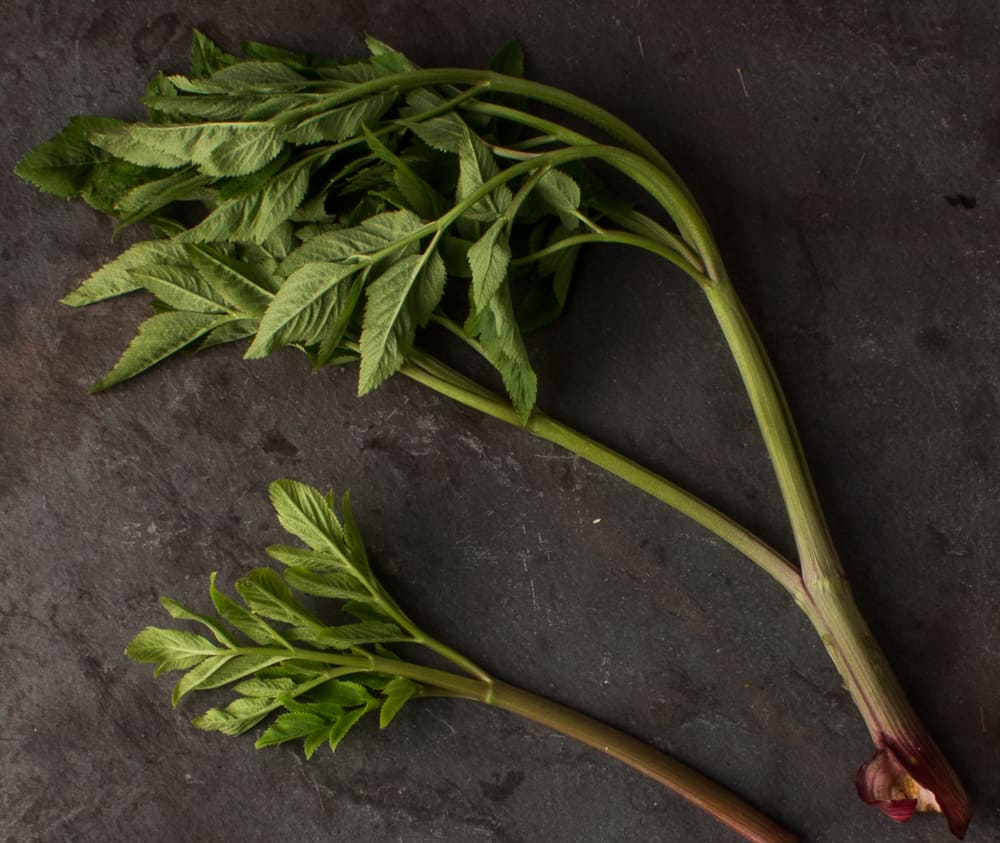
After the summer heat I cut a second crop of tender angelica from my patch, a carpet of tender stems and leaves I picked a week before the snow fell in November, I'd never seen it before.
With berry season over I was wondering what to do with it, an angelica leaf salsa verde turned out ho-hum. The stems I saved, and did a little research into some of my Scandinavian books, since I know it's used there.
The most interesting angelica recipe was from Magnus Nilsson's: The Nordic Cookbook, a comprehensive tome in the same vein of simple, hyper cultural-focused books like The Silver Spoon (Italy) and France, the Cookbook .
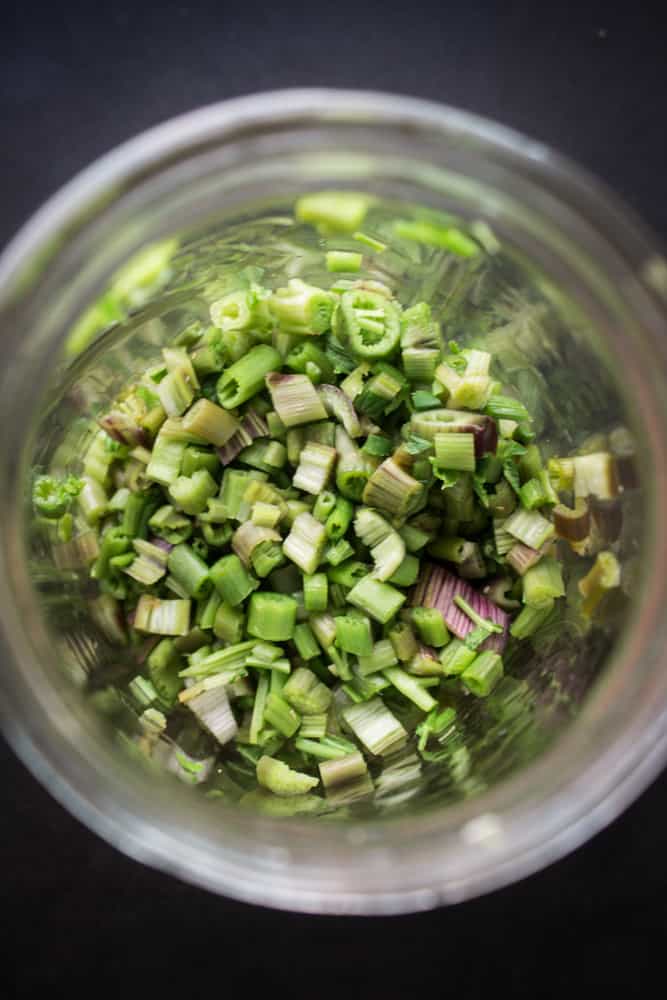
In the part of the book covering the Sami, a nomadic group of people. The life of the Sami revolves around reindeer, which were to them as buffalo were to Native Americans in the Midwest. The Sami put wild herbs in reindeer milk. Leaving the milk to ferment in barrels and using it throughout the season.
A wild vitamin supplement
The angelica and it's preservation serves two purposes as an interesting condiment, as well as a source of vitamin C to warm off scurvy, a real danger in an area where growing citrus isn't possible. You could draw a parallel with the Native American use of Nixtamalized corn to prevent pellagra, a vitamin defficiency which is to niacin as scurvy is to vitamin C.
Magnus shares a simplified recipe of the tradtional Sami method for home cooks that puts blanched angelica and a number of other herbs (sow thistle, sorrel) into cultured milk, which sounded like a great experiment I had to try.
I make creme fraiche regularly, but I was intersted in mimicing the flavor of a non-cow milk version too, to inch a bit closer to the reindeer milk method.
Capturing the aroma
I thought for years that the flavor of angelica wasn't dairy soluble, I'd given up. I remember cooking angelica stems in cream, tasting the result, and dumping it directly into the garbage. When you heat angelica, the aroma and flavor dissipate quick, and you might as well have not added anything.
After the failure of cooking angelica in cream, this was my aha moment. The power of the herb is the cut stem's aroma.
Whatever you store it with or even store it near will absorb the flavor just like another precious ingredient I know of: truffles. Just like truffles, the smell of angelica is powerful, but delicate: too much cooking or other ingredients overpower it. What you want to do is harvest the aroma, the physical pieces of the stem are almost secondary in a sense.
Once I thought about infusing things with the scent, cooking with the plant got easier. My rhubarb-strawberry crisp scented with angelica uses the same scent capturing technique.
My final version(s) for you is a little closer to the old Sami method. Magnus removed the fermentation process for home cooks by putting the herbs in cultured milk, but I know plenty of home cooks that are ambitious enough to make they're own yogurt, including my dad. As far as fermentation goes this is child's play: a couple days, no PH tester, no canning, no danger.
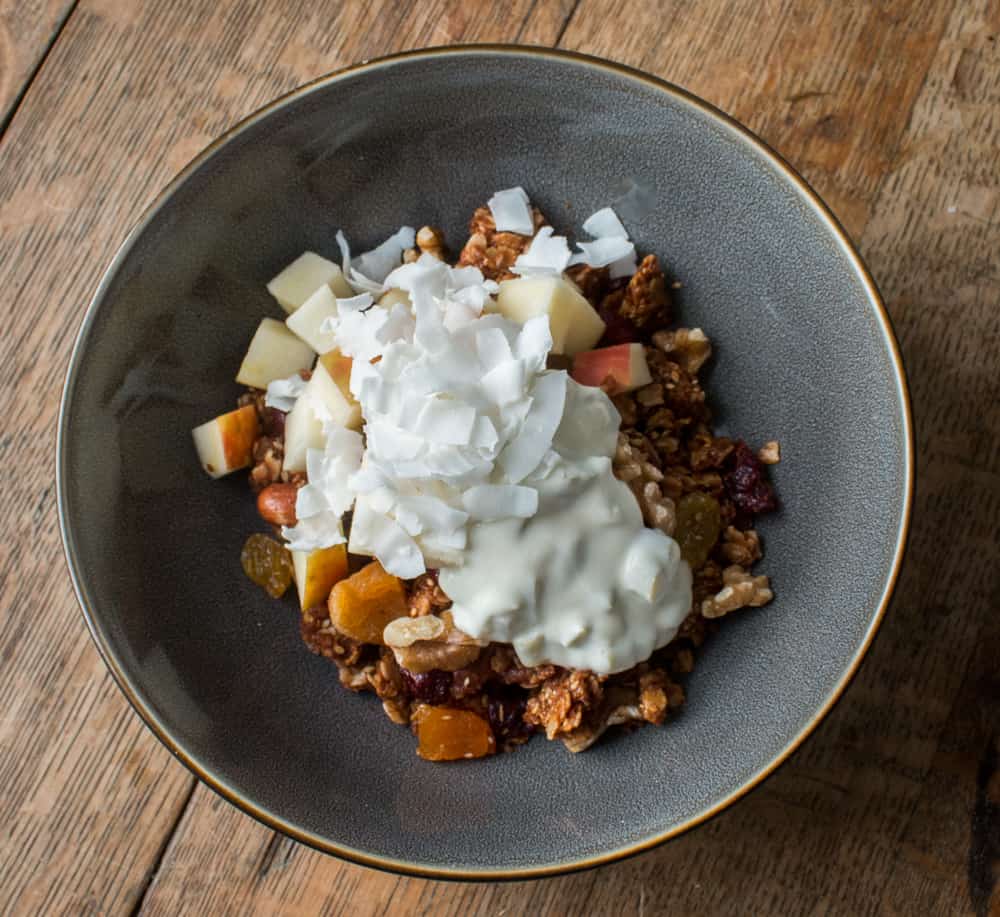
How to Use
A lot of people are going to look at this and say,
" I don't know Alan" "I just stopped herding reindeer, or I already used the last of my un-pastuerized reindeer milk".
You can use goat milk-what I did since my coop was fresh out of reindeer milk, and because I'm also the goat ambassador to the Twin Cities in partnership with Shepherd Song Farm. As you can infer from the recipe for the crème fraîche below, you can even use regular old cow's milk, which gives a thick, rich result, and is the recipe I recommend starting with.
Serving
Think of places where you want yogurt, creme fraiche, or even whipped cream. It loves fresh berries, oats, rhubarb, and citrus partners. You can definitely drizzle some maple syrup or honey over it with granola, or use it to accent a sweet cake, like a pound cake.
Whipping
If you remove the pieces of angelica with a slotted spoon after the cream has fermented, the flavored creme fraiche can be sweetened and whipped. Think strawberry cake, rhubarb cake, pavlova with raspberries and red currants, etc. If you wanted, the pieces of stem could be folded back in, but serve the cream quickly as they will make it fall eventually.
Using Other Herbs
The original recipe of the Sami included a blend. I wanted a pure, distilled angelica flavor, so I used only angelica stems, but you could use just about any herb with a strong aroma you could think of.
I can't speak to if bitter tannins from wild herbs like tansy or yarrow will transfer to the dairy, but the possible mixtures you could make, and blends you could create are limited only by your imagination.
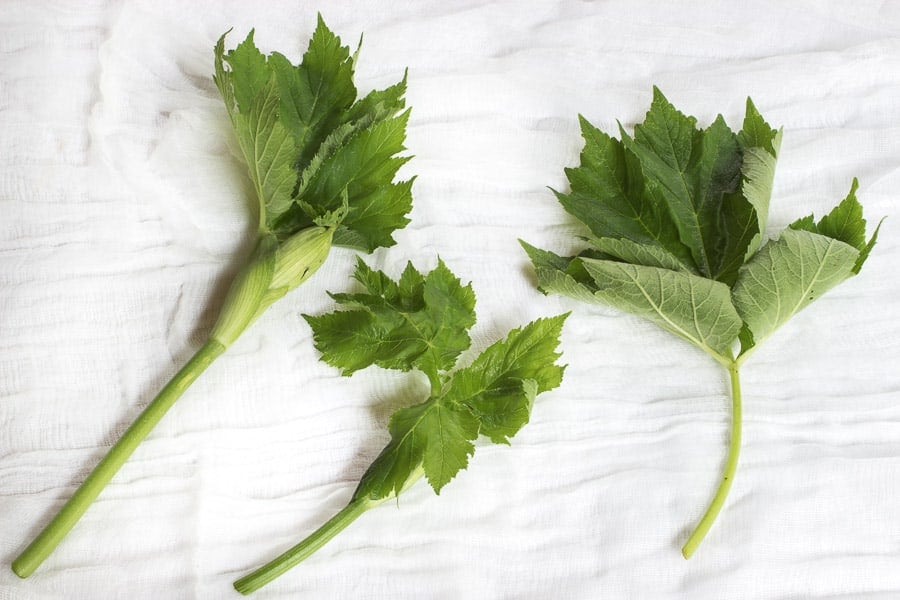
I made some separately with cow parsnip and anise root and they both were excellent. Anise root in particular could be very useful because the physical stem itself is very stringy, but the licorice flavor is so, so good.
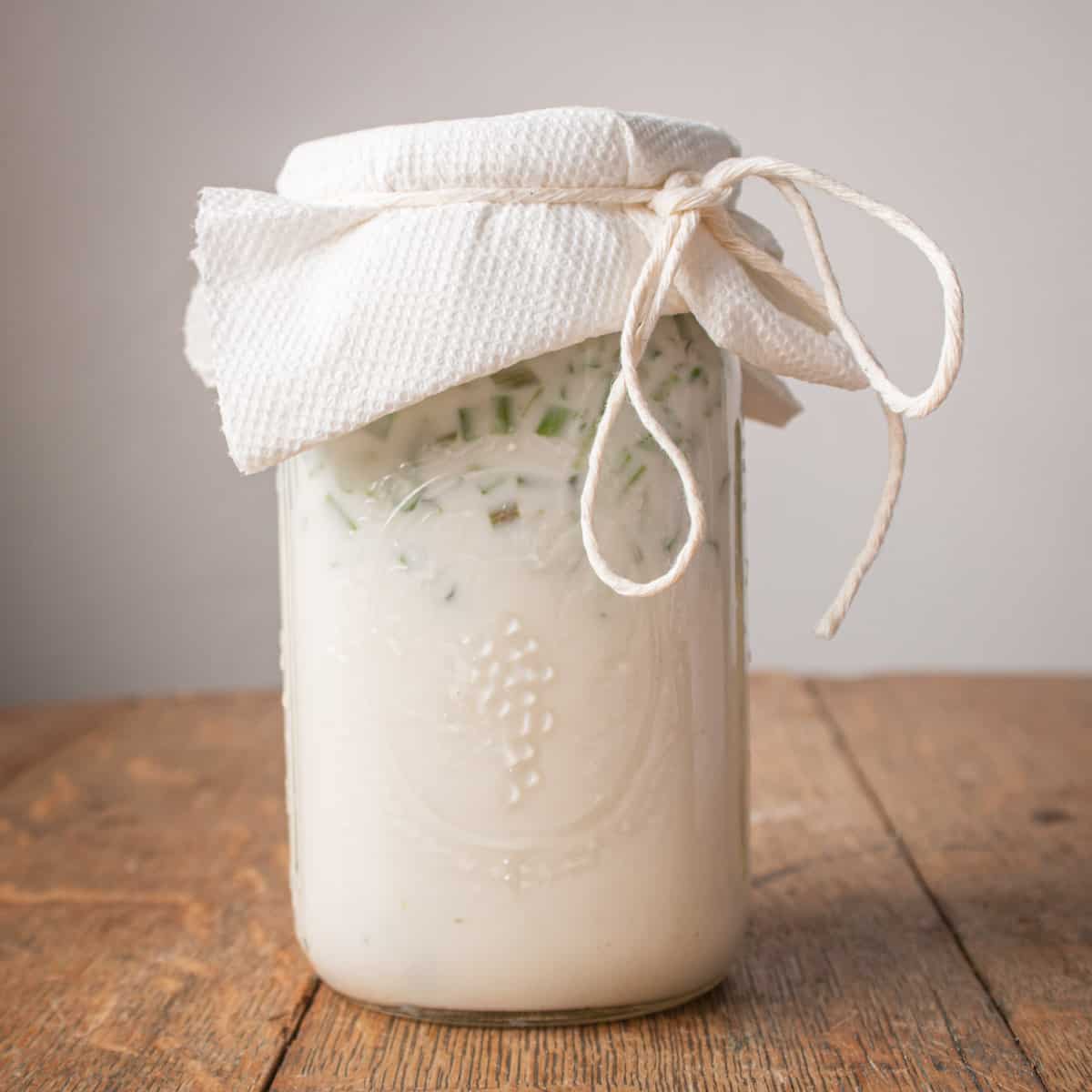
Fermented Angelica Crème Fraîche
Equipment
- 1 qt mason jar
Ingredients
- 4 oz tender angelica stems
- 3.75 cups heavy cream
- 4 Tablespoon high quality greek yogurt, full fat buttermilk can be substituted
Instructions
- blanch the angelica until just tender in boiling water, then cool and dice. (see note)
- Mix the cream and buttermilk or yogurt. Add the chopped angelica to the cream-buttermilk mixture, mix to combine, and transfer to a mason jar or another container with an open top. label, date, and cover the top with cheesecloth.
- Place the container in a warm place for 2-3 days, or until it's thickened and tastes strongly of angelica to your liking, remember that as it chills it will thicken even more.
- You can also just put the cream and buttermilk in a pan and gently heat it to body temp to speed the process instead of leaving it out, but I'd add the angelica afterwords to keep the aroma.

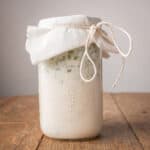
Sophie
I wonder how I could make it with my cow milk kefir fermentation? I look forward to try it this summer! Thanks for the inspiration
Alan Bergo
That’ll work fine. I used goat milk as it’s what I had. Reindeer milk is traditional and that’s more along the lines of heavy cream.
darin
I love this idea. How long will the yogurt keep in the fridge? Your help is appreciated. Keep up the amazing work.
Alan Bergo
Hi Darin, well, from my experience the yogurt won't last as long as the creme fraiche due to the lower amount of fat in commercially available goat milk, this is probably why reindeer milk was very good for preservation and fermenting (the "milk" from reindeer is likely closer to our cream or half and half in the US.) Fat, like salt, is a natural preservative, and the more fat in something=the longer it will keep, it's the same reason heavy cream keeps longer than milk. like I mention in here, I would start with the creme fraiche method if you'd like to try it, since it's thick like whipped cream and an easier sell to wary eaters. At the restuarant I'm using creme fraiche I made 3 months ago, once the bacteria take hold you can get a great shelf life from it, but very occasionally I skim off a bit of mold from the surface to reveal fresh cream underneath. Thanks.